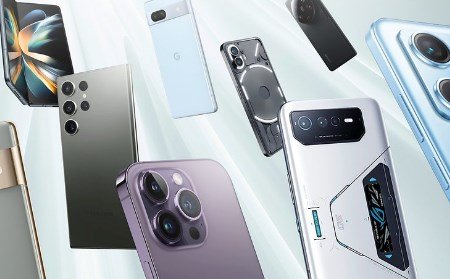
In the ever-evolving world of technology, innovation knows no bounds. From foldable screens to AI-driven assistants, the smartphone industry has witnessed remarkable advancements in recent years. However, as our devices become more sophisticated, they also demand more power. Battery life remains a significant concern for smartphone users worldwide. Could the answer to this dilemma lie in nuclear-powered smartphones? In this article, we will delve into the intriguing concept of nuclear-powered smartphones, exploring their feasibility and potential benefits.
Contents
The Power Challenge
One of the primary challenges facing smartphone manufacturers is providing users with longer battery life without making devices bulkier or heavier. Current lithium-ion batteries have limitations, and incremental improvements can only go so far. Users constantly crave more power to keep their devices running throughout the day, and power-hungry applications like augmented reality (AR) and virtual reality (VR) demand even more resources. This has led to a quest for alternative power sources that can provide sustained energy.
The Nuclear Option
Nuclear power has been harnessed for decades to generate electricity for various purposes, from lighting up cities to powering spacecraft. It is a highly efficient and compact energy source. Researchers have contemplated the use of radioisotope thermoelectric generators (RTGs) in smartphones, which could utilize the heat produced by the natural radioactive decay of isotopes to generate electricity. These isotopes, like plutonium-238, release a constant amount of heat over time, providing a steady power source.
Safety and Regulation
When discussing nuclear technology in consumer electronics, safety is paramount. There are legitimate concerns regarding the potential risks associated with using radioactive materials in everyday devices. Manufacturers would need to ensure that these materials are adequately shielded to prevent any harmful radiation exposure to users. Furthermore, stringent regulations and oversight would be necessary to guarantee the safe production and disposal of nuclear-powered smartphones.
Benefits of Nuclear-Powered Smartphones
Extended Battery Life: Perhaps the most significant advantage of nuclear-powered smartphones is the potential for significantly longer battery life. Users could enjoy days or even weeks of uninterrupted use without needing to recharge.
Environmentally Friendly: Nuclear power generates electricity with minimal greenhouse gas emissions compared to fossil fuels. By using nuclear technology, smartphones could become more eco-friendly, contributing to a greener future.
Reduced E-Waste: Longer-lasting smartphones could lead to a reduction in electronic waste, as consumers would upgrade their devices less frequently.
Enhanced Performance: With a more reliable and consistent power source, smartphones could run more powerful applications, opening up new possibilities for innovation in mobile technology.
Challenges and Concerns
While nuclear-powered smartphones hold promise, they also come with significant challenges and concerns:
Safety: As mentioned earlier, safety is paramount. The use of radioactive materials requires rigorous safety measures to protect users and the environment.
Regulatory Hurdles: Developing and producing nuclear-powered smartphones would involve navigating complex regulatory processes and garnering approval from regulatory bodies worldwide.
Cost: The development and production of nuclear-powered smartphones could be costly, potentially making them inaccessible to a significant portion of the population.
Public Perception: Convincing the public that nuclear-powered smartphones are safe and viable will be a significant challenge, given the apprehensions surrounding nuclear technology.
Conclusion
The concept of nuclear-powered smartphones is undeniably intriguing, offering the tantalizing prospect of extended battery life and enhanced performance. However, numerous obstacles must be overcome before these devices become a reality. Safety, regulatory approval, cost considerations, and public perception are just a few of the hurdles that must be addressed.
While nuclear-powered smartphones may not be on the immediate horizon, they represent a fascinating frontier in the ongoing quest for innovative solutions to power-hungry mobile devices. As technology continues to advance, it is not inconceivable that one day, nuclear-powered smartphones may be in our pockets, redefining the way we use and think about our handheld companions.







